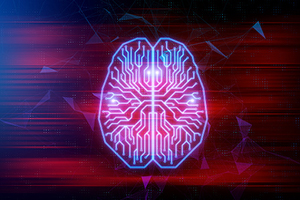Researchers have developed a method based on artificial intelligence (AI) for the histopathologic diagnosis and grading of prostate cancer. The study, published by Ström et al in The Lancet Oncology, showed that the AI system can be trained to detect and grade prostate cancer from needle biopsy samples at a ranking comparable to that of international experts in prostate cancer pathology.

Photo credit: Getty
“Our results show that it is possible to train an AI system to detect and grade prostate cancer on the same level as leading experts,” said lead study author Martin Eklund, PhD, Associate Professor in the Department of Medical Epidemiology and Biostatistics at Karolinska Institutet. “This has the potential to significantly reduce the workload of uropathologists and allow them to focus on the most difficult cases.”
A problem in today’s prostate pathology is that there is a certain degree of subjectivity in the assessments of the biopsies. Different pathologists can reach different conclusions, even though they are studying the same samples. This leads to a clinical problem where treatments may be selected based on ambiguous information. In this context, the researchers see significant potential to use the AI technology to increase the reproducibility of the pathologic assessments.
Training the System
To train and test the AI system, the researchers digitized more than 8,000 biopsies taken from some 1,200 Swedish men aged 50 to 69 to high-resolution images using digital pathology scanners. About 6,600 of the samples were used to train the AI system to spot the difference between biopsies with or without cancer. The remaining samples, and additional sets of samples collected from other labs, were used to test the AI system. Its results were also compared against the assessments of 23 uropathologists.
Results
“The idea is not that AI should replace the human involvement, but rather act as a safety net to ensure that pathologists don’t miss some cancers, and assist in standardization of grading. It could also serve as an alternative in parts of the world where there is a complete lack of pathologic expertise today.”— Martin Eklund, PhD
Tweet this quote
The findings showed that the AI system achieved an area under the receiver operating characteristics curve of 0.997 for distinguishing between benign and malignant samples on the independent test dataset, and 0.986 on the external validation dataset. When it comes to determining Gleason score, the AI system was on par with the international experts, with a mean pairwise kappa of 0.62, compared to the corresponding values for the expert pathologists (0.60–0.73).
Despite the initial findings, more validation is needed before the AI system may be rolled out broadly in clinical practice, according to the researchers. That is why a multicenter study spanning nine European countries is currently underway, with completion slated by the end of 2020. That study aims to train the AI system to recognize cancer in biopsies taken from different laboratories, with different types of digital scanners and with very rare growth patterns. In addition, a randomized study starting in 2020 will examine how the AI model may be implemented in Sweden’s health-care system.
“The idea is not that AI should replace the human involvement, but rather act as a safety net to ensure that pathologists don’t miss some cancers, and assist in standardization of grading,” explained Dr. Eklund. “It could also serve as an alternative in parts of the world where there is a complete lack of pathologic expertise today.”
Disclosure: For full disclosures of the study authors, visit thelancet.com.

